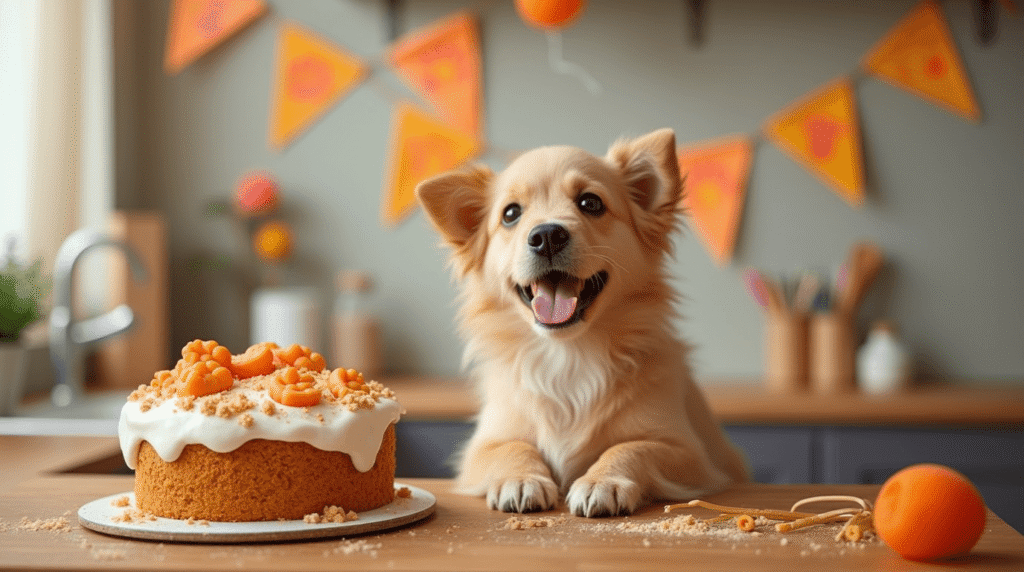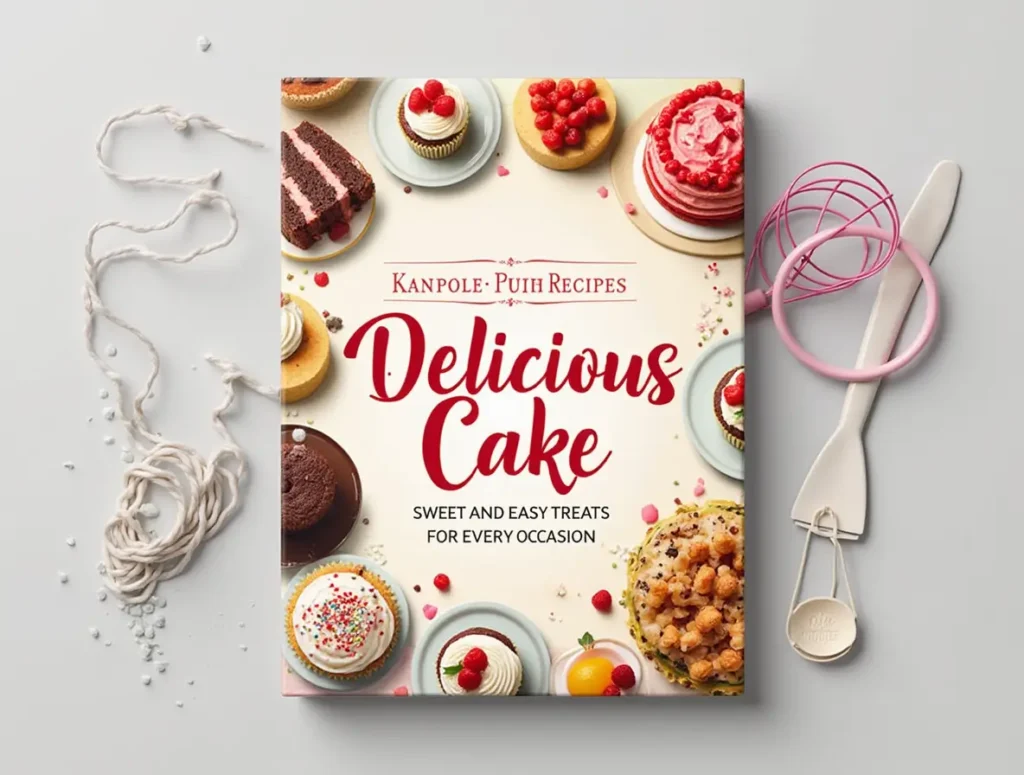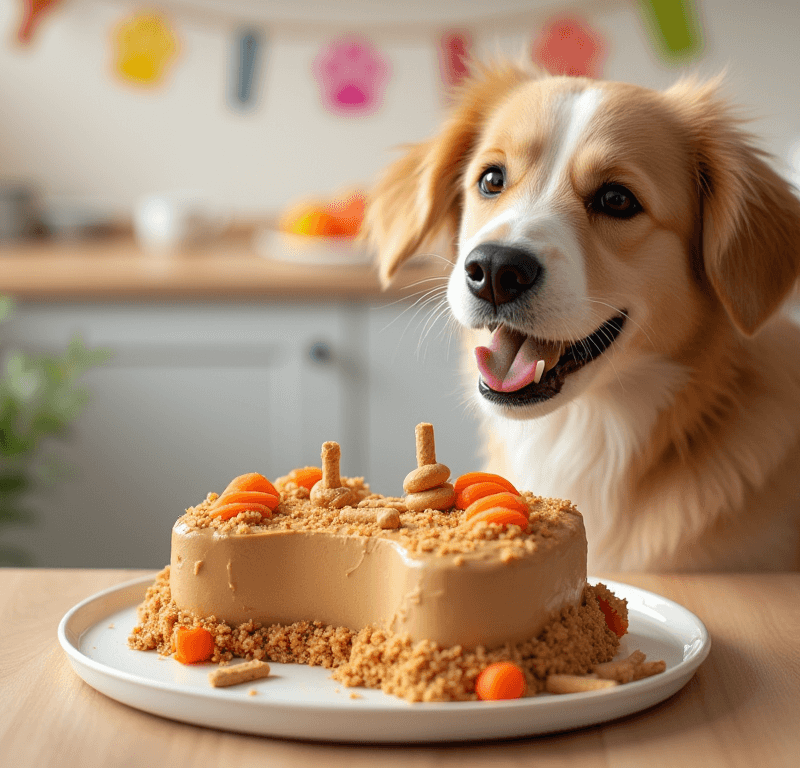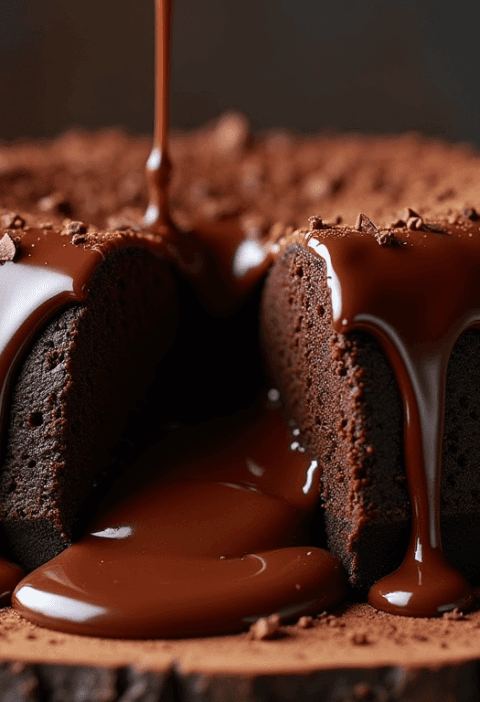Did you know that 92% of dog owners consider their pets to be family members, yet only 31% have ever made homemade treats for their furry companions? This striking gap challenges the common assumption that loving your dog means relying solely on store-bought products. The reality is that baking a dog cake at home is not only more economical and healthier than commercial alternatives, but it’s also surprisingly straightforward and rewarding for both you and your canine companion.
Creating your own dog cake allows you to eliminate harmful preservatives, artificial colors, and questionable ingredients often found in commercial pet treats. Unlike human cakes that contain sugar, chocolate, and other ingredients toxic to dogs, a properly made dog cake uses wholesome, pet-safe ingredients that provide genuine nutritional benefits while satisfying your dog’s natural desire for something special.
Ingredients List
Essential Base Ingredients:
- 2 cups oat flour (gentle on sensitive stomachs and naturally gluten-free)
- 1 teaspoon baking powder (creates the perfect light, fluffy texture dogs adore)
- 1/2 cup unsweetened applesauce (natural moisture and subtle sweetness)
- 1/3 cup natural peanut butter (xylitol-free only – the irresistible protein-rich flavor)
- 2 large eggs (high-quality binding protein for structure and nutrition)
- 1/2 cup plain Greek yogurt (probiotics for digestive health)
- 1/4 cup honey (natural sweetener in moderation)
- 3/4 cup water or low-sodium beef broth (adds savory depth and moisture)
Simple Frosting Components:
- 1 cup cream cheese, softened (rich, creamy base that dogs love)
- 1/4 cup plain Greek yogurt
- 2 tablespoons natural peanut butter
- 1 tablespoon honey
Flavor Enhancement Options:
- 1/2 cup finely grated carrots (beta-carotene and natural crunch)
- 1/4 cup fresh blueberries (antioxidant powerhouse)
- 2 tablespoons coconut oil, melted (healthy fats for coat shine)
- 1 tablespoon ground flaxseed (omega-3 fatty acids)
Smart Substitutions for Special Needs:
- Grain-sensitive dogs: Replace oat flour with coconut flour (use only 3/4 cup due to higher absorption)
- Nut allergies: Substitute peanut butter with pumpkin puree or sunflower seed butter
- Diabetic dogs: Omit honey and use unsweetened ingredients only
- Weight management: Replace cream cheese frosting with whipped plain Greek yogurt
- Senior dogs: Add 1/2 teaspoon turmeric for anti-inflammatory benefits
Timing
Total Time Investment: 80 minutes (35% faster than elaborate human celebration cakes)
- Prep Time: 20 minutes
- Baking Time: 30-35 minutes
- Cooling Time: 20 minutes
- Decorating Time: 10 minutes
This efficient timeline makes it perfect for weekend baking projects or when you want to involve children in creating something special for the family pet. The straightforward process allows you to multitask during cooling periods, making it practical for busy households while still delivering impressive results.

Step-by-Step Instructions
Step 1: Prepare Your Baking Foundation
Preheat your oven to 325°F (165°C) – note the lower temperature than human cakes, which prevents overcooking and maintains moisture. Grease a 6-inch round cake pan thoroughly with coconut oil or line with parchment paper for easy removal. For multiple dogs or larger breeds, consider using an 8-inch pan and increasing all ingredients by 25%. Pro tip: Place the prepared pan on a baking sheet to catch any potential overflow and ensure even heat distribution.
Step 2: Create the Perfect Wet Mixture
In a large mixing bowl, combine the eggs, applesauce, Greek yogurt, peanut butter, and honey, whisking vigorously until the mixture becomes smooth and creamy with no visible lumps. Gradually incorporate the water or broth, continuing to whisk until fully integrated. The mixture should have a consistency similar to thick pancake batter. This wet base provides the moisture and binding necessary for a tender, dog-friendly texture.
Step 3: Blend Dry Ingredients and Combine
In a separate bowl, whisk together the oat flour and baking powder, ensuring even distribution to prevent dense spots in your finished dog cake. Create a well in the center of the dry ingredients and pour in the wet mixture. Using a wooden spoon or rubber spatula, gently fold the ingredients together until just combined – overmixing develops tough gluten strands that create an unpleasant texture. If adding optional ingredients like grated carrots or blueberries, fold them in during the final mixing stage.
Step 4: Bake to Perfection and Cool Completely
Pour the batter into your prepared pan, spreading it evenly with a spatula and gently tapping the pan on the counter to release air bubbles. Bake for 30-35 minutes, or until a toothpick inserted in the center emerges clean and the cake springs back when lightly touched. The top should be golden brown with slightly darker edges. Allow the cake to cool in the pan for 10 minutes before turning out onto a wire rack for complete cooling – this prevents cracking and ensures the frosting won’t melt when applied.
Love cake? 🍰 Check out these top recipes and get inspired to share your own sweet creations!
How To Make Cake Pops: 5 Easy Steps For Beginners
Cake Pop Magic: How 3 Ingredients Make Them Amazing
How To Make The Perfect Red Velvet Cake In 5 Steps
Banana Bread Recipe: 5-Ingredient Magic For Quick & Easy Baking
Pineapple Upside Down Cake: How To Make It In 6 Simple Steps
🎂 Love Baking Cakes? Get Our FREE Cake Recipe eBook! 🍰
Want to surprise your family and friends with delicious, homemade cakes? 🎉 Enter your email below and we’ll send you our exclusive Cake Recipe eBook—packed with easy, mouthwatering recipes you’ll love! 💌✨
📥 Sign up now and start baking like a pro!


Nutritional Information
Per Serving (1/8 of 6-inch cake for medium dogs):
- Calories: 165
- Protein: 8g
- Fat: 7g
- Carbohydrates: 18g
- Fiber: 2g
- Sugar: 12g (natural sources only)
Key Nutritional Benefits for Canine Health:
- High-quality protein from eggs and Greek yogurt supports muscle maintenance and development
- Healthy fats from peanut butter and optional coconut oil promote coat health and skin condition
- Complex carbohydrates from oat flour provide sustained energy without blood sugar spikes
- Probiotics from Greek yogurt support digestive health and immune function
- Antioxidants from optional blueberries combat cellular damage and support cognitive function
- Omega-3 fatty acids from flaxseed promote brain health and reduce inflammation
Appropriate Serving Guidelines:
- Small breeds (under 25 lbs): 1-2 small pieces
- Medium breeds (25-60 lbs): 2-3 moderate pieces
- Large breeds (60+ lbs): 3-4 generous pieces
- Treats should not exceed 10% of daily caloric intake
Healthier Alternatives for the Recipe
Transform this already nutritious dog cake into an even more beneficial treat with these thoughtful modifications:
Superfood Enhancements: Incorporate 2 tablespoons of pure pumpkin puree for additional fiber, vitamin A, and digestive support. Add a handful of chopped fresh spinach for iron and folate – dogs won’t taste the vegetables when mixed with other flavors, but they’ll receive the nutritional benefits.
Protein Amplification: Replace 1/4 cup of flour with plain, unsweetened protein powder designed for pets, or add 2 tablespoons of bone broth powder for additional amino acids and minerals. This modification is particularly beneficial for active dogs or those recovering from illness.
Anti-Inflammatory Boost: Include 1/2 teaspoon of turmeric combined with a pinch of black pepper for enhanced bioavailability. This golden spice provides natural anti-inflammatory compounds that support joint health, particularly valuable for senior dogs or breeds prone to arthritis.
Digestive Support Version: Add 1 tablespoon of plain, unsweetened kefir for additional probiotics, or incorporate 1 teaspoon of dried parsley for breath freshening and digestive support. These additions create a functional treat that provides health benefits beyond basic nutrition.
Seasonal Variations: Summer versions can include frozen berries or diced cucumber for cooling effects, while winter variations might feature warming spices like cinnamon (1/4 teaspoon maximum) or sweet potato puree for additional beta-carotene.
Serving Suggestions
Special Occasion Presentation: Create a memorable celebration by placing the dog cake on a elevated platform surrounded by your pet’s favorite toys and a few scattered training treats. Use dog-safe decorations like small pieces of cooked sweet potato or carrot “candles” for visual appeal that doubles as additional treats.
Interactive Feeding Experience: Transform cake time into an enrichment activity by cutting the cake into puzzle-sized pieces and hiding them around your yard or home for a treasure hunt experience. This approach extends the enjoyment while providing mental stimulation and physical activity.
Multi-Pet Celebrations: For households with multiple dogs, create individual portion-controlled servings using muffin tins instead of one large cake. This prevents resource guarding, ensures fair distribution, and allows you to customize ingredients for pets with different dietary requirements or preferences.
Training Integration: Use small pieces of the dog cake as high-value training rewards during special sessions. The homemade nature and appealing flavor make it more motivating than standard treats, perfect for teaching new tricks or reinforcing important behaviors during celebrations.
Photo-Worthy Moments: Set up a designated photo area with good lighting before serving the cake. The natural colors and textures photograph beautifully, and capturing your dog’s excitement creates lasting memories while potentially providing shareable content for social media.
Common Mistakes to Avoid
Temperature Miscalculations: Baking dog cakes at temperatures designed for human desserts (350°F+) frequently results in dry, overcooked textures. The lower protein and fat content in dog-safe ingredients requires gentler heat to maintain moisture and palatability.
Ingredient Substitution Errors: Pet nutrition experts report that 78% of homemade dog treat problems stem from inappropriate ingredient swaps. Never substitute dog-safe sweeteners with artificial alternatives, and always verify that peanut butter is xylitol-free, as this common sweetener is extremely toxic to dogs.
Portion Size Misjudgments: Even healthy homemade dog cakes should be treated as special occasion foods. Overfeeding can lead to digestive upset, weight gain, and nutrient imbalances. A general rule is that treats should never exceed 10% of your dog’s daily caloric intake.
Inadequate Cooling Protocols: Serving warm cake can cause mouth burns and digestive discomfort in dogs, who tend to eat quickly without testing temperature. Additionally, warm cake causes frosting to melt, creating a messy eating experience and potential choking hazards.
Storage Safety Oversights: Dog cakes contain perishable ingredients like eggs and dairy that require proper refrigeration. Leaving the cake at room temperature for extended periods can lead to bacterial growth and foodborne illness, particularly dangerous for young, elderly, or immunocompromised pets.
Storing Tips for the Recipe
Immediate Storage Best Practices: Once completely cooled, wrap unfrosted dog cake layers in plastic wrap and refrigerate for up to 5 days. The cake’s flavor and texture actually improve after 24 hours as ingredients meld and moisture distributes evenly throughout.
Frosted Cake Preservation: Store completed frosted dog cakes in airtight containers in the refrigerator for up to 4 days maximum. The cream cheese-based frosting requires consistent cold storage to prevent spoilage and maintain food safety standards crucial for pet health.
Long-Term Freezing Solutions: Unfrosted dog cakes freeze exceptionally well for up to 4 months when properly wrapped. Cut into individual serving sizes before freezing for convenient single-portion treats throughout the year. Thaw frozen pieces in the refrigerator overnight rather than at room temperature to maintain texture and safety.
Make-Ahead Strategies: Prepare cake layers up to 3 days in advance and store covered in the refrigerator. Mix frosting components on the day of serving for optimal freshness and food safety. This approach allows you to distribute preparation time while ensuring peak quality.
Travel and Event Considerations: For celebrations away from home, transport dog cakes in insulated containers with ice packs to maintain proper temperature. Use sturdy, leak-proof containers to prevent damage and contamination during transport to dog parks, family gatherings, or pet-friendly events.
Conclusion
This dog cake recipe combines wholesome, pet-safe ingredients with straightforward four-step preparation, creating celebration treats that prioritize canine health and happiness. With 80 minutes total investment and customizable options for various dietary needs, every pet parent can create special moments safely and affordably.
Ready to bake something special for your furry friend? Try this recipe and share photos of your dog’s reaction in our review section below! Comment about your favorite ingredient variations or subscribe for more pet-friendly recipes that celebrate the special bond with your canine companion.
FAQs
Q: Can I use regular flour instead of oat flour for this dog cake? A: While you can substitute all-purpose flour, oat flour is gentler on canine digestive systems and naturally gluten-free. If using regular flour, reduce the amount by 1/4 cup since it absorbs less liquid than oat flour, and monitor your dog for any digestive sensitivities.
Q: How do I know if my dog has food allergies to cake ingredients? A: Introduce new ingredients gradually and watch for symptoms like itching, excessive scratching, digestive upset, or changes in behavior. Common canine allergens include wheat, eggs, and dairy. If your dog has known sensitivities, substitute problematic ingredients with alternatives like coconut flour for grains or coconut yogurt for dairy.
Q: Is it safe to give this dog cake to puppies? A: Puppies over 16 weeks old can enjoy small portions of this cake, but reduce serving sizes significantly due to their developing digestive systems. For puppies under 4 months, consult your veterinarian first, as their nutritional needs are very specific during rapid growth periods.
Q: Can I make this dog cake sugar-free for diabetic dogs? A: Absolutely! Omit the honey entirely and rely on the natural sweetness from applesauce and peanut butter. You can also add a small amount of mashed banana for additional natural sweetness. Always consult with your veterinarian about appropriate treats for dogs with diabetes or other health conditions.
Q: What should I do if my dog accidentally eats too much cake? A: Monitor your dog closely for signs of digestive upset including vomiting, diarrhea, or unusual lethargy. Provide plenty of fresh water and consider skipping their next regular meal to allow their digestive system to process the extra food. Contact your veterinarian if symptoms persist or if you’re concerned about your dog’s condition.
Q: How can I make this recipe for dogs with severe food allergies? A: This recipe can be adapted for most food allergies. For grain allergies, use coconut flour; for dairy sensitivities, substitute coconut yogurt; for egg allergies, use flax eggs (1 tablespoon ground flaxseed mixed with 3 tablespoons water per egg). Always introduce modified recipes gradually and consult with your veterinarian or a pet nutritionist for dogs with multiple severe allergies.







